Discover 15 hidden attractions, cool sights, and unusual things to do in Tempe (United States). Don't miss out on these must-see attractions: Tempe Center for the Arts, Tempe Butte, and Tempe Town Lake. Also, be sure to include Sun Devil Stadium in your itinerary.
Below, you can find the list of the most amazing places you should visit in Tempe (Arizona).
Table of Contents
Tempe Center for the Arts
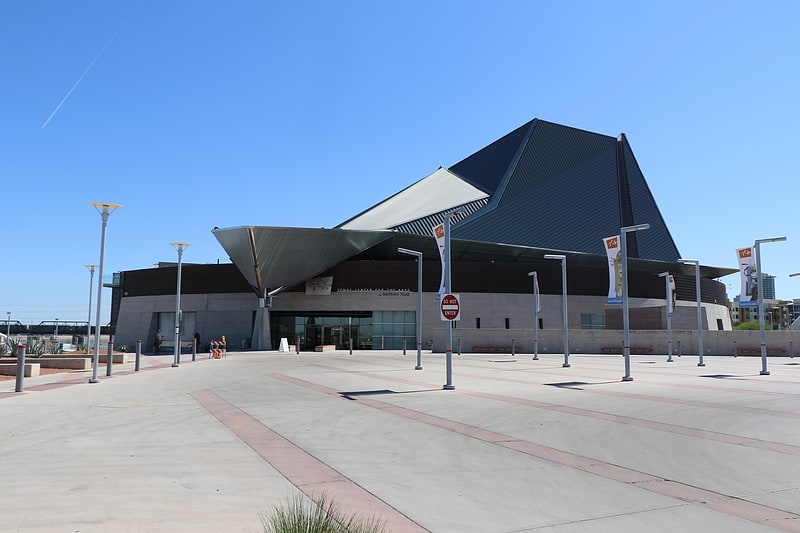
Theater in Tempe, Arizona. Tempe Center for the Arts is a publicly owned performing and visual arts center in Tempe, Arizona. It opened in September 2007 and houses a 600-seat proscenium theater, a 200-seat studio theater and a 3,500-square-foot gallery. Its Lakeside Room seats 200 and overlooks Tempe Town Lake, with views of the Papago Buttes and Camelback Mountain.[1]
Address: Tempe, 700 W Rio Rio Salado Pkwy, Tempe, AZ 85281-5293
Tempe Butte
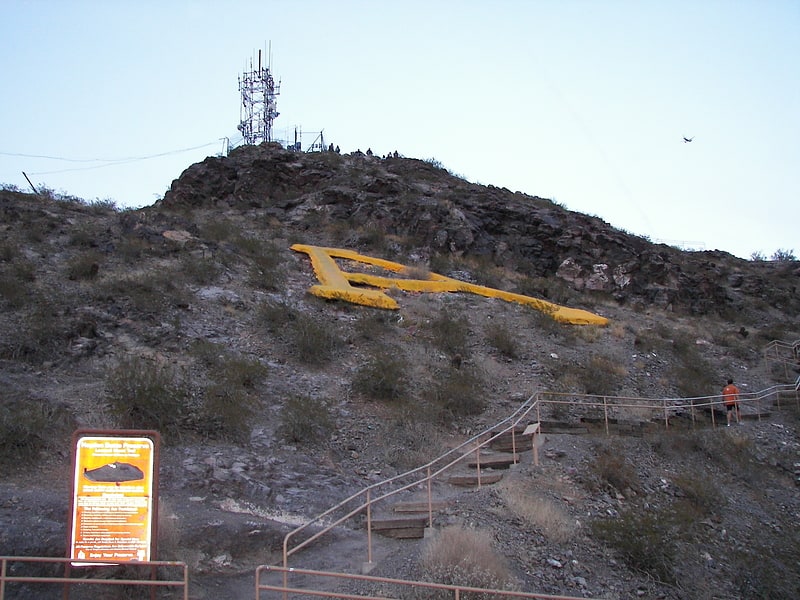
Butte in Arizona. Tempe Butte is the official name of an andesite butte of volcanic origin, located partially on Arizona State University's Tempe campus in Tempe, Arizona. It is often referred to by locals as A Mountain, after the 60-foot-tall gold-painted letter 'A' near the top. Another name for the area, used by the City of Tempe, is Hayden Butte.
The highest point of Tempe Butte stands at 1,495 feet (456 m) in elevation, while its base is at approximately 1,150 feet (350 m) in elevation.
Tempe Butte is most often seen as the backdrop to games held in Sun Devil Stadium, including until recently the Tostitos Fiesta Bowl, as well as Super Bowl XXX.[2]
Address: Mill Avenue & Rio Salado, 85281 Tempe (Tempe)
Tempe Town Lake
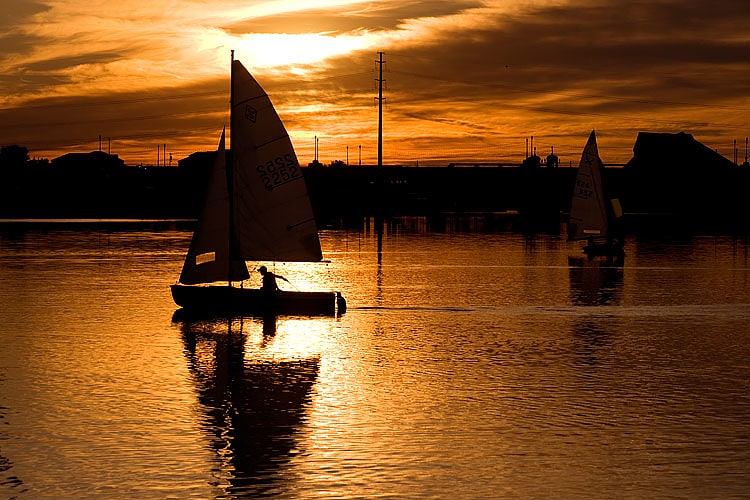
Reservoir in Arizona. Tempe Town Lake is an artificial perennial reservoir located just north of Tempe Butte at the confluence of the intermittent Salt River and the ephemeral Indian Bend Wash in Tempe, Arizona, United States. The reservoir receives much of its water from the Colorado River via the Central Arizona Project.
On July 20, 2010, a portion of the west side of the dam that contained the water in the lake collapsed, sending a flood of water into the Salt River and draining the lake.[3]
Sun Devil Stadium

Stadium in Tempe, Arizona. Sun Devil Stadium is an outdoor football stadium on the campus of Arizona State University in Tempe, Arizona, United States. It is home to the ASU Sun Devils football team of the Pac-12 Conference. The stadium's seating capacity as of 2018 is 56,634, reduced from a peak of 74,865 in 1989. The natural grass playing surface within the stadium was named Frank Kush Field in 1996 in honor of the former coach of the team. The stadium underwent a five-year, $304-million renovation that was completed in August 2019.
The stadium has hosted two annual college football bowl games: the Fiesta Bowl from 1971 to 2006, and the Cactus Bowl from 2006 to 2015.
Sun Devil Stadium was the only major football stadium in the Phoenix metropolitan area until the construction of State Farm Stadium – then called "Cardinals Stadium" – in Glendale in 2006. Sun Devil Stadium was the home of the Arizona Cardinals of the National Football League (NFL) from the 1988 through the 2005 seasons. Following the 2005 season, the Cardinals moved to their new stadium in Glendale.[4]
Address: 500 E Veteran's Way, 85287-0001 Tempe (Tempe)
Desert Financial Arena

Arena in Tempe, Arizona. Desert Financial Arena is a 14,000-seat multi-purpose arena located at 600 E Veterans Way in Tempe, Arizona, a suburb of Phoenix. It sits immediately east of Sun Devil Stadium on the northern edge of the Tempe campus of Arizona State University.
Constructed in the spring of 1974 as the ASU Activity Center and at the cost of $8 million, it is the home of multiple ASU Sun Devil athletic teams, to include men's basketball, women's basketball, women's volleyball, women's gymnastics, and men's wrestling. The facility also plays host to graduation ceremonies and a variety of concerts and shows. The building replaced Sun Devil Gym as the primary arena for the Sun Devils' basketball team.
The former naming rights for the arena were purchased by Wells Fargo & Co. in 1997. The current naming rights to arena were purchased by Desert Financial Credit Union in 2019 for $1.5 million for 5 years.[5]
Mill Avenue Bridges
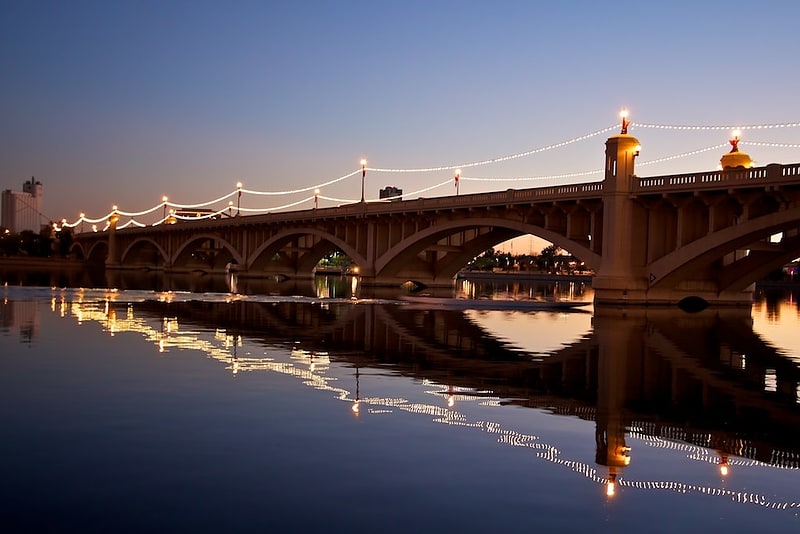
Bridge. The Mill Avenue Bridges consist of two bridges that cross the Salt River in Tempe, Arizona at the north end of the shopping district on Mill Avenue. The first bridge opened in August 1931 and the second bridge opened in 1994.[6]
Tempe Diablo Stadium
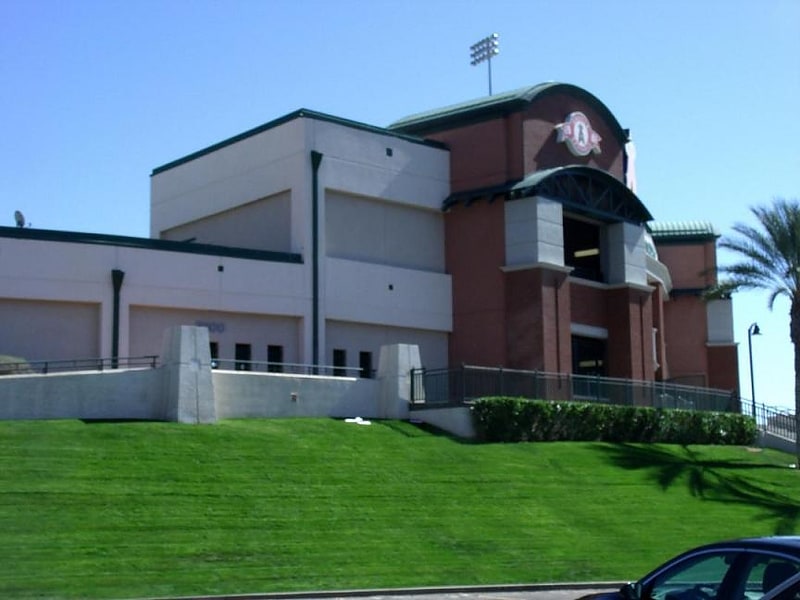
Stadium in Tempe, Arizona. Tempe Diablo Stadium is a baseball field located in Tempe, Arizona. It has been the spring training home of the Los Angeles Angels since 1993, and it is the home field for night games of the Arizona League Angels. It was the spring training home of the Seattle Pilots in 1969 and 1970, the Milwaukee Brewers in 1971 and 1972, and the Seattle Mariners from 1977 through 1993.
The stadium was built in 1968 and holds 9,558 people, making it the oldest and smallest stadium in the Cactus League. The stadium underwent an extensive $20 million renovation and was rededicated on Mar. 3, 2006. The renovation included the main stadium, the Major League Fields and the Minor League Complex on site. The Arizona Sports and Tourism Authority, a municipal corporation charged with funding renovations of Cactus League stadiums throughout Maricopa County, funded $12 million of the renovations.
The Angels and the city government announced an agreement in May 2021 to keep the team's spring training in Tempe through at least 2035. The deal includes extensive renovations of the stadium and the surrounding complex, including a new home clubhouse, team offices, a team store and an outfield concourse.
Tempe Diablo Stadium can be seen from the Maricopa Freeway. A small desert butte looms down the left field foul line.
The stadium is also the site for the Arizona's high school baseball playoffs.[7]
Address: 2200 W Alameda Dr, 85282-3124 Tempe (Tempe)
ASU Art Museum
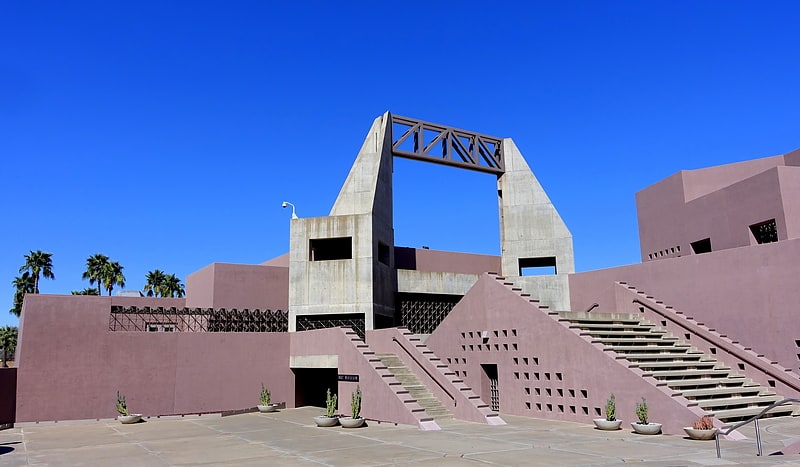
Museum in Tempe, Arizona. The Arizona State University Art Museum is an art museum operated by Arizona State University, located on its main campus in Tempe, Arizona. The Art Museum has some 12,000 objects in its permanent collection and describes its primary focuses as contemporary art, including new media and "innovative methods of presentation"; crafts, with an emphasis on American ceramics; historic and contemporary prints; art from Arizona and the Southwestern United States, with an emphasis on Latino artists, and art of the Americas, with one historic American pieces and modernist and contemporary Latin American works.
The art collection was established in 1950. The current director of the Art Museum is Miki Garcia. The director of the museum reports to the dean of the ASU Herberger Institute for Design and the Arts, and community members are represented through the museum's Creative Impact Board. The museum is located in two buildings. The main exhibition space is the Nelson Fine Arts Center, designed by architect Antoine Predock. A second museum facility, the Ceramics Research Center lies to the north, on 7th Street and Mill Ave in the Brickyard Engineering Building. Admission to the museum is free. Parking at the main museum is free if you use the reserved spaces directly in front of the museum. Parking at the Brickyard location is metered.[8]
Address: 51 E 10th St, 85281 Tempe (Tempe)
Hayden Library
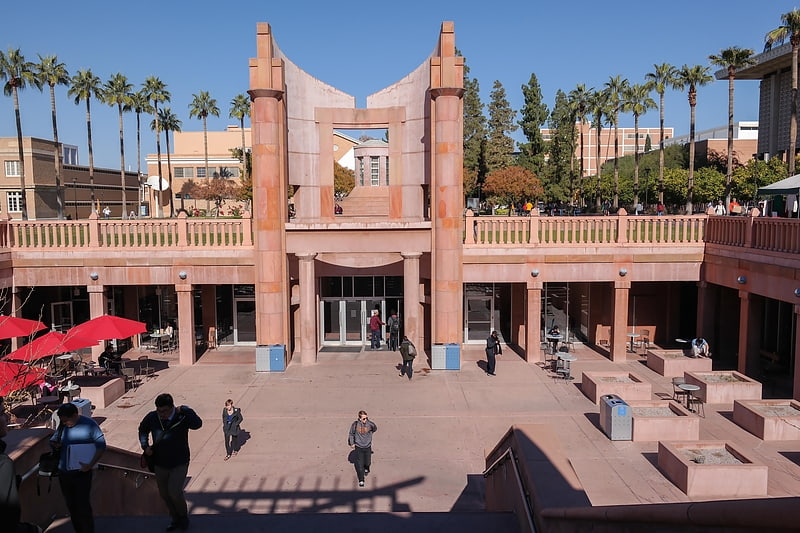
Charles Trumbull Hayden Library, at 300 East Orange Mall on the Tempe campus of Arizona State University, was built in 1966 and was named for Charles Trumbull Hayden, founder of Tempe and the first president of the board of the Arizona Territorial Normal School, ASU's predecessor. Hayden Library is the largest facility on ASU's Tempe campus, and now houses millions of books and other research materials in the humanities and social sciences, including humanities in education. Over the course of the 20th century, Hayden Library has undergone expansions and renovations, including the addition of an underground plaza and entrance in 1989, designed by the original architects. A renovation was completed in 2020 by Ayers Saint Gross.[9]
Address: 300 E Orange Mall, 85281 Tempe (Tempe)
The Biodesign Institute
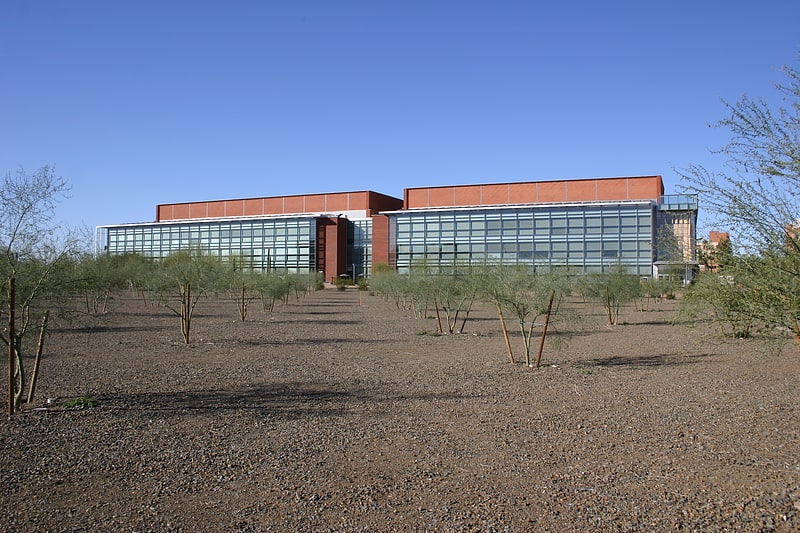
Research institute in Tempe, Arizona. The Biodesign Institute is a major research center known for nature-inspired solutions to global health, sustainability, and security challenges located on the Tempe campus of Arizona State University. The institute is organized into a growing number of collaborative research centers and laboratories staffed by scientists in diverse disciplines. It is currently led by Executive Director Dr. Joshua LaBaer, a personalized diagnostics researcher.[10]
Address: Tempe, 727 E. Tyler St. Tempe, Arizona 85287
Marquee Theatre
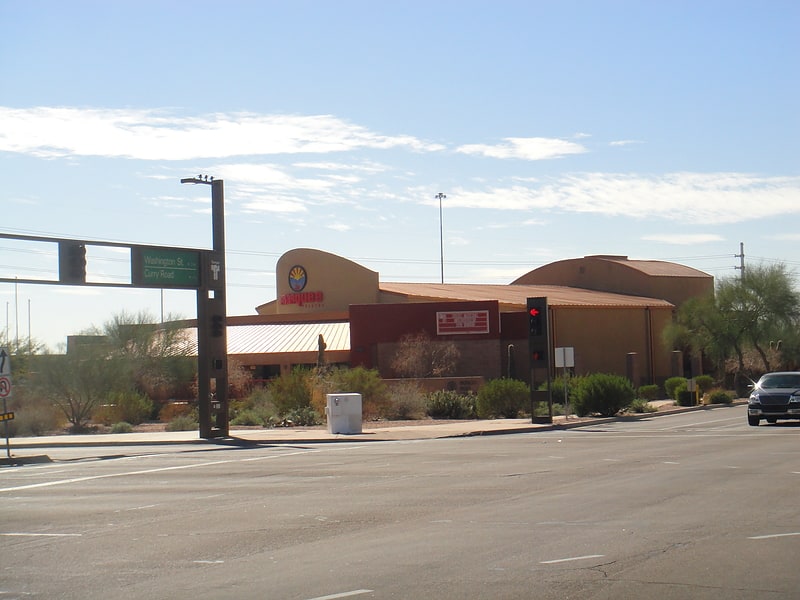
Music venue in Tempe, Arizona. Marquee Theatre is a music venue in Tempe, Arizona. The theater sits on the north side of Tempe Town Lake near the Mill Avenue Bridge, at the intersection of Mill Avenue and Washington Street, the primary business and entertainment district in Tempe.[11]
Address: Tempe, 730 N Mill Ave, Tempe, AZ 85281-1204
Gammage Memorial Auditorium
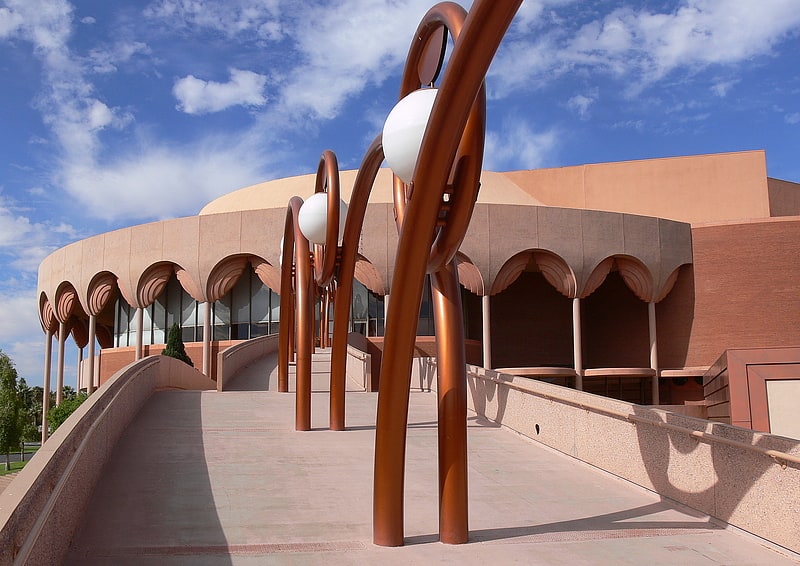
Performing arts center in Tempe, Arizona. The Grady Gammage Memorial Auditorium is a multipurpose performing arts center at 1200 South Forest Avenue at East Apache Boulevard in Tempe, Arizona, within the main campus of Arizona State University. The auditorium, which bears the name of former ASU President Grady Gammage, is considered to be one of the last public commissions of American architect Frank Lloyd Wright. It was built from 1962 to 1964.
The Gammage stands as one of the largest exhibitors of performing arts among university venues in the world, featuring a wide range of genres and events.
The Auditorium was listed on the National Register of Historic Places in 1985.[12]
Address: Tempe, 1200 South Forest Avenue
Palm Walk
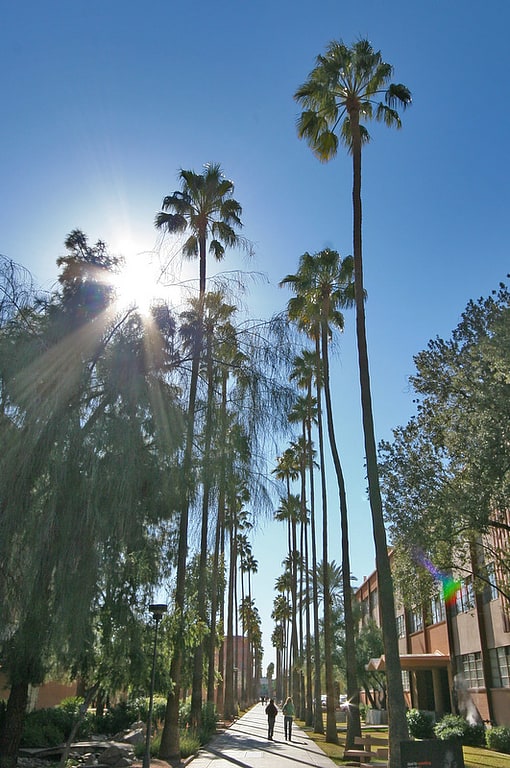
The Palm Walk is a pedestrian mall located on Arizona State University's Tempe campus that is lined with one hundred and five Mexican fan palms. Running from the foot of the University bridge to the north, to the Student Recreation Complex to the south, the path runs for almost four-tenths of a mile. The path itself follows the old alignment of Normal Avenue, before it was incorporated into the expanding college's campus.[13]
Address: Palm Walk, 85282 Tempe (Tempe)
Niels Petersen House
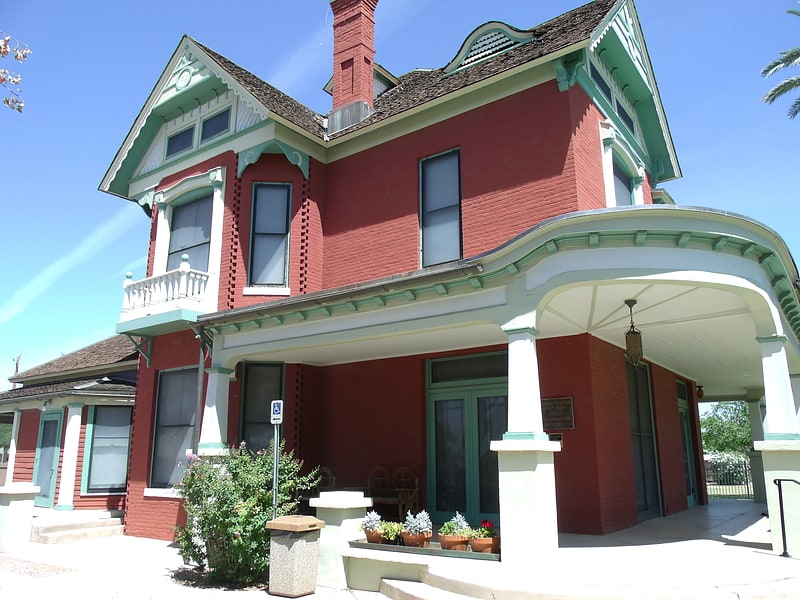
The Niels Petersen House is a local historic landmark in Tempe, Arizona, that is listed on the U.S. National Register of Historic Places. It is an example of Queen Anne Style brick architecture in the Salt River Valley.[14]
Arboretum at Arizona State University

The Arboretum at Arizona State University is an arboretum located in small exhibit sites scattered across walkways and open areas throughout the campus of the Arizona State University in Tempe, Arizona. All of the sites are open to the public daily without charge, since the campus' public areas are not shut off from city streets.
The arboretum was formally dedicated in 1990, and now includes over 300 species from the Sonoran Desert and other regions. It contains one of the best collections of date palms and conifers in the desert Southwest, as well as a growing collection of native southwestern plants. Major collections currently include:
- Conifers
- Deciduous trees
- Evergreens
- Fruit trees
- Palms
Address: 556 S Packard Dr, 85287-0001 Tempe (Tempe)